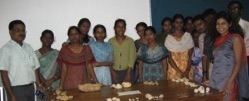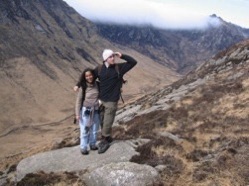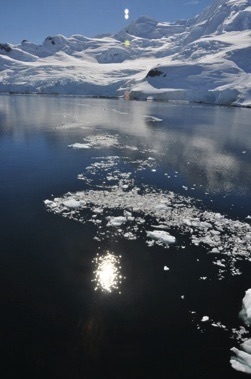Tripati Lab
Teaching


Teaching
I am particularly interested in effective methods for stimulating critical thinking and active learning in introductory and advanced science classes, as well as in early career scientists.
I teach “The Blue Planet: Introduction to Oceanography.” I have been revamping the course by introducing:
• Two-stage exams focused on problem solving with a substantial collaborative component, to facilitate tests being used as both a learning tool and an assessment tool.
• Spending time thinking about how to teach concepts in a socially relevant context (i.e., knowledge of the Coriolis force and resultant Ekman transport can be used to predict where oil from the Deepwater Horizon would eventually show up, and where the chemical dispersant Corexit sprayed on the surface and at depth in the Gulf of Mexico would go).
• Having students work in groups to complete science communication projects (one of which has 15,000 views!) that are available to see online at http://www.youtube.com/playlist?list=PL1UEJdZ1r6RmdVdfoeWBCcFXFR26lVND3 .
• Using clickers and showing relevant music videos and news clips during lecture.
• Taking advantage of social media (Facebook) for discussions.
Consistent with previous studies that implemented such methods, I have found that attendance when using these methods is close to 90% (as opposed to the typical 50%), that students are more engaged during the course and have an increased interest in science, and that as a consequence, their performance in the course improves.
I also offer a popular freshman seminar entitled “Rock Whispering: Storytelling the Geologic Record of Extreme Climates.” It is focused on describing how we read the record of climate change from geological archives, discussing climate processes, and exploring enigmatic events and scientific controversies. Students pick the topics they want to learn about during the next course period.
In addition, I have taught a capstone course for geoscience seniors termed “Historical and Regional Geology” that discusses the history and philosophy of geology and geochemistry, tools that are at the cutting edge, and a walking tour through Earth’s history from the Archean through the Holocene based on both classic and recent studies.
At the graduate level, I teach two courses: one that is focused on introducing students to “Geochemical Proxies used in Paleoclimate and Paleobiology” as well as an “Advanced Topics” course that delves into the topics further. Clumped isotope geochemistry features prominently in both courses, and I plan to develop a course just focused on clumped isotopes in the near future.
Teaching is not limited to the classroom but also occurs in the laboratory and in the field. I have advised or co-advised multiple postdoctoral fellows and scientists, graduate students, undergraduates, high school teachers, and high school students in research projects.
I have taught about the paleoclimate of Antarctica for the program Students on Ice, which brings university students to the region in an effort to not only teach them about polar science, but also to stimulate a transformative educational experience.
Finally I have lectured on clumped isotopes for the Agouron Geobiology summer course, and also delivered lectures at two universities while doing field work in India.
As a scientist and educator working in the geosciences, my mission is to face the following multiple challenges:
• Developing new approaches to resolve relevant scientific issues.
• Training the next-generation of scientists.
• Stimulating critical thinking.
• Bringing cutting-edge research into the mainstream of education.
• Communicating the societal relevance of scientific inquiry.
• Encouraging and enabling bright students from a range of backgrounds to focus on scientific careers to address pressing questions.
• Drawing research into a broad and interdisciplinary context.

